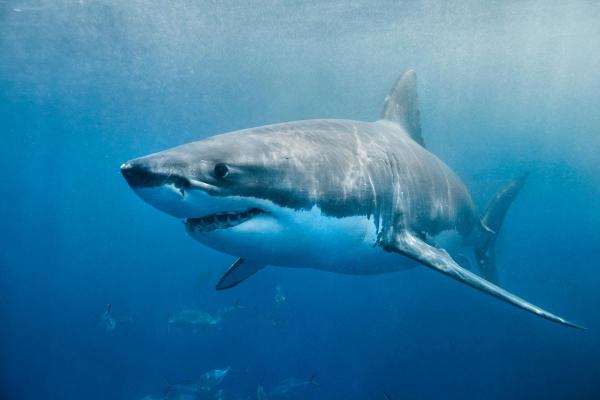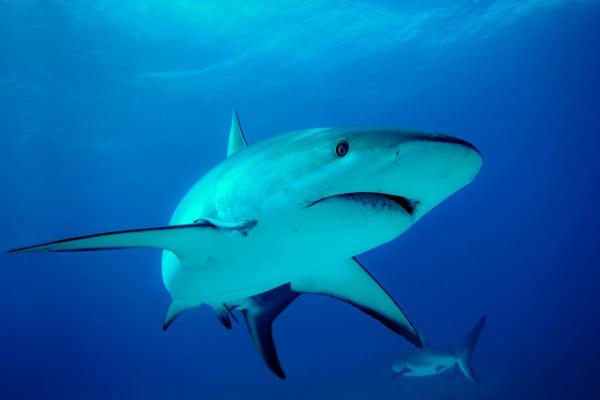How Many Bones Do Sharks Have?


You may be surprised to hear that sharks have no bones. Sharks are members of the Chondrichthyes class, a diverse group of marine predators that have evolved over millions of years to adapt to their aquatic environment. One of the most debated and enigmatic questions in shark biology is the nature of their skeletal system. Unlike most vertebrates, which feature bones for structural support, sharks exhibit a unique feature. Their skeleton is made mostly of cartilage. It is for this reason members of the Chondrichthyes class are known commonly as cartilaginous fishes.
In this AnimalWised, we discover more about the morphological structure of sharks by asking how many bones do sharks have?
Do sharks have bones?
Sharks belong to the group of marine animals known as cartilaginous fish, within the Chondrichthyes class. This class also includes rays and chimaeras. Unlike terrestrial vertebrates such as mammals and birds, which have bony skeletons, sharks have evolved to have a cartilaginous skeleton. This means that most of their body, including their spine, fins, and internal organs, is supported by cartilage. In this way, we can say a shark has zero bones.
Cartilage is a softer and more flexible connective tissue than bone. It provides a light structure that is ideal for life in the aquatic environment. The flexible nature of cartilage allows sharks to move with greater agility and efficiency in the water, which is essential for hunting and catching prey.
One reason why many people might think sharks have bones is the presence of shark jaws. These have been mounted as ornaments for many years and the jaw certainly appears as if it is bone. It is hard and white like bone, but it is actually cartilage which has been dried out. It is this which gives it the bone like texture. While they are incredibly powerful, they are also supple and malleable when the shark is alive.
The cartilaginous skeletons of sharks are more flexible and stronger than bone, giving them an evolutionary advantage. They can withstand the pressure of water in the depths of the ocean and keep their shape even in extreme situations.
This cartilaginous adaptation has been a crucial factor in the survival and evolutionary success of sharks for millions of years. It has allowed them to occupy different ecological niches in the oceans around the world and become one of the main marine predators, maintaining an important balance in aquatic ecosystems.
You can discover more about shark behavior with our article on how sharks reproduce.
Why don't sharks have bones?
Sharks lack bones mainly due to their evolutionary adaptation to the aquatic environment in which they live. Throughout millions of years of evolution, sharks have developed a cartilaginous skeleton as it provides certain advantages in the aquatic environment. There are several key reasons why this adaptation has been beneficial to their survival and success as marine predators:
- Weight: cartilage is lighter and more flexible than bone, allowing sharks to move with greater ease and agility in the water. This is essential for hunting and catching prey, as they need to be quick and agile to engage their prey and avoid predators.
- Density: cartilage has a lower density than bone, reducing the shark's buoyancy and allowing them to stay suspended in the water without additional effort. This is especially useful for species that need to remain in constant motion to maintain the flow of oxygen through their gills.
- Resistance: although cartilage is softer than bone, it is also more resistant and flexible. This feature allows sharks to withstand the pressure of water at great depths without their skeletons collapsing. Additionally, the flexibility of cartilage allows them to bend and twist, which is beneficial for maneuverability and evasion.
- Habitat: sharks occupy a wide variety of marine habitats, from coastal waters to the deep ocean. Their cartilaginous skeleton provides them with greater adaptability to face different environmental conditions and pressures at different depths.
Since their skeleton is cartilaginous, it means sharks have no bones. This does not mean they don't have teeth, but they have their own adaptations. You can learn about this in our related article on how many teeth do sharks have?

Shark skeleton and anatomy
Shark anatomy has evolved over millions of years to make them highly specialized predatory animals. Due to the strength and intelligence of animals like the orca, they are not always the apex predator in their environment, but they are close to it. Every aspect of their anatomy is adapted for their lifestyle as agile and efficient hunters in the world's oceans.
Here is a description of the main characteristics of shark skeleton and anatomy:
- Cartilaginous skeleton: as mentioned above, sharks have a skeleton primarily made up of cartilage rather than bone. This adaptation gives them a lighter and more flexible structure, making them agile and efficient in the water.
- Body shape: sharks have streamlined, torpedo-shaped bodies that allow them to swim quickly and with ease. Their streamlined shape reduces water resistance and helps them to be efficient predators.
- Fins: depending on the species, sharks can have multiple fins that help them maintain stability and maneuverability while swimming. The dorsal, pectoral, pelvic and caudal (tail) fins are essential to their ability to navigate and directional control.
- Teeth: these animals have multiple rows of sharp, pointy teeth. Their teeth are designed to grab, tear, and chew prey. Also, the sharks teeth are replaceable. When they lose a tooth, a new one moves in to replace it. This is known a polyphyodontism and it also occurs in animals such as the crocodile. Learn more with our article on fun facts about crocodiles.
- Sensory organs: sharks have a variety of highly developed sensory organs that help them locate and hunt prey in the water. They have an excellent sense of smell, allowing them to detect traces of blood in the water from very far distances. They also have small pores called Lorenzini ampullae. These are sensitive to electrical signals emitted by other organisms and allow them to locate hidden prey.
- Respiratory system: sharks have gills through which they extract oxygen from the water. Their ability to maintain the flow of water over their gills while swimming allows them to obtain the oxygen necessary to maintain their metabolic activities.
- Jaw structure: the jaw structure of sharks is unique and allows them to extend it to bite their prey with great force. Their mouth is located in the lower part of the body, which makes it easy to access the prey that is below them.
Now you know that sharks have zero bones in the traditional definition, you can learn more about the different types of Mediterranean shark with our related article.

If you want to read similar articles to How Many Bones Do Sharks Have?, we recommend you visit our Facts about the animal kingdom category.
- Gilbert, P. W. (1970). Studies on the anatomy, physiology, and behavior of sharks.
- Kardong, K. V. (2007). Vertebrates: Comparative Anatomy, Function, Evolution (No. QL805 K3518 2007). Spain: McGraw-Hill Interamericana.
- Moss, M. L. (1977). Skeletal tissues in sharks. American Zoologist, 17(2), 335-342.






